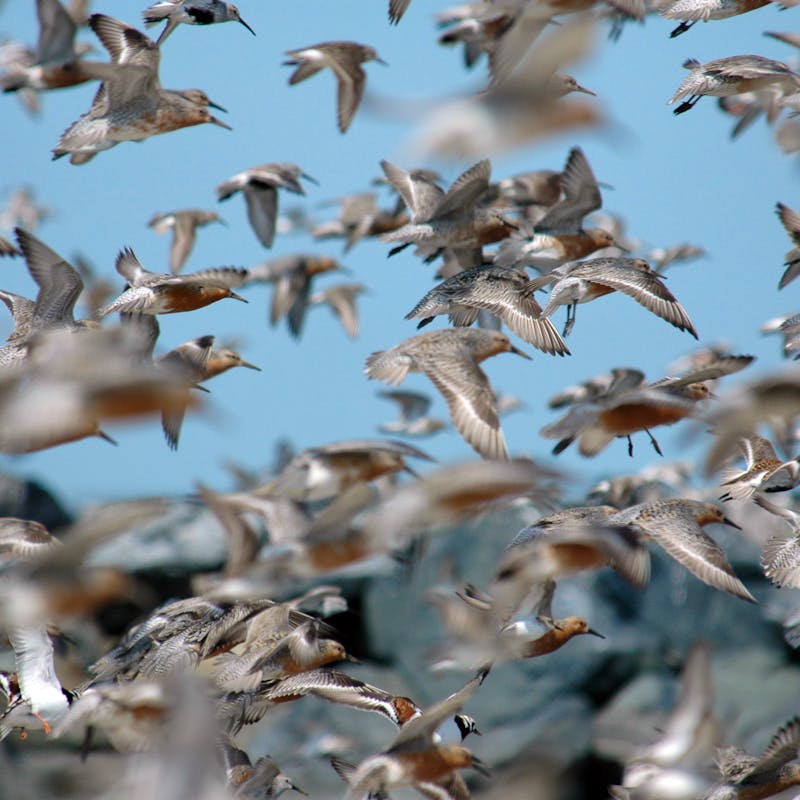Earlier this year the cactus ferruginous pygmy owl was relisted as threatened under the Endangered Species Act. Get to know this little owl and how you can help them in this Q&A with Southwest Program Director, Bryan Bird!
Hoo is this little owl and where does it live?
Cactus ferruginous pygmy owls are a subspecies of ferruginous pygmy owls (Glaucidium brasilianum). Ferruginous pygmy owls are primarily found throughout Central and South America. The subspecies, Glaucidium brasilianum cactorum, is found in Arizona, southern Texas and parts of northern Mexico.
Cactus ferruginous pygmy owls live in desert scrublands. They are known for nesting in the cavities of trees and cacti. The population living in Arizona is especially keen on nesting in Saguaro cacti.
What do these owls eat?
Despite their tiny stature, these owls are bold hunters. They will pursue lizards and birds twice their size! They also eat crickets, beetles and scorpions.
What do these tiny owls sound like?
Ferruginous pygmy owls’ “hoot” sounds more like a hollow whistle. Their song is comprised of a series of repeated “toots” that lack variation in pitch.
Are cactus ferruginous pygmy owls easy to spot?
These owls are crepuscular, meaning they are most active at dawn and dusk. This, combined with their rarity, makes them extremely difficult to spot. If you are lucky enough to see one, however, you may notice they prefer to stay close to the ground. On average, cactus ferruginous pygmy owls don’t fly more than 4.5 feet above the ground.
Why are these birds threatened?
Ferruginous pygmy owls are decreasing throughout their entire range, but the cactus subspecies is doing particularly poorly. The Arizona population is currently estimated to be in the low hundreds. The Texas population is doing slightly better with estimates in the high hundreds.
The largest threat to these owls is habitat loss. Sprawling developments and livestock grazing eat away at their already shrinking and fragmented habitat. Invasive species and noxious weeds are misplacing the native fauna and increasing competition for the owls’ dwindling prey base. One example is the invasive buffelgrass. This tall, green grass is much more flammable than native grasses. Its abundance has led to more destructive wildfires which threaten native plants that are not fire-adapted, including the Saguaro cacti.
Habitat loss landed cactus ferruginous pygmy owls on the endangered species list in 1997, but a home builders’ lawsuit stripped its protections for development and halted monitoring efforts in 2006. The developers provided a flawed argument that the Sonoran Desert population in Arizona was insignificant—a prime example of what happens when ESA decisions are not informed by science. Defenders of Wildlife led the fight for the past 17 years to restore protections for these tiny owls.
What did the relisting mean for you personally?
Seeing the cactus ferruginous pygmy owls relisted means this unique little subspecies may still have a chance at enduring survival. It now has the full force of the law and federal funding to assist in preventing its extinction. Plus, in those 17 years between its original listing and now, the federal government and nonprofit organizations finally have the required tools to help save them.
How can folks at home help these owls?
For anyone living in the Arizona or Texas counties that overlap with cactus ferruginous pygmy owls, I encourage you to speak up for them and other wildlife. Engage in development proposals, including for housing and highways, and take a stand against degrading the owls’ habitat anymore. And don’t forget, your vote in local elections matters! Take time to learn about local and regional candidates' positions on conservation issues and vote accordingly. There are also opportunities to assist in the removal of invasive species, like buffelgrass, during special volunteer workdays.
We all, no matter where we live, can help spread the word for these owls. Educate yourself and share the facts with family, friends and followers. Ask Congress to fully fund the ESA, which would increase funding for the U.S. Fish and Wildlife Service to protect and restore endangered species and their habitats. And, if you are able, give to organizations like Defenders, who are working hard to protect these birds.
We are counting down to the Endangered Species Act’s 50th anniversary. Follow along to learn more about threatened cactus ferruginous pygmy owl and the other 49 species we’re highlighting!
From the Blog













Follow Defenders of Wildlife
facebook bluesky twitter instagram youtube tiktok threads linkedin